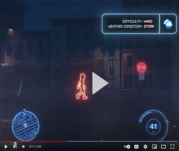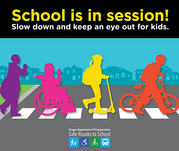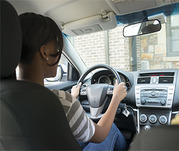|
|
|
October 2023
This Halloween, let’s make happy memories, not tragic nightmares. The only thing scarier than zombies and witches loose on the streets is an impaired driver. Remember: Even one alcoholic beverage could be one too many for some drivers. So, if you plan to drive, plan to refrain from alcohol. If you do plan to enjoy some witch’s brew, be sure to arrange a sober ride home in advance. Stay safe on Halloween night, and every night.
|
|
|
National Pedestrian Safety Month

The personal, physical, and environmental benefits of walking and rolling on other devices can lead to healthier, quieter, cleaner, and safer streets. Walking can also improve local economies and enhance social and community engagement, which can lead to more vibrant, resilient, and livable spaces.
Unfortunately, in 2021 there were 7,388 pedestrians killed in traffic crashes, a 12.5% increase from the 6,565 pedestrian fatalities in 2020. This is the highest since 1981 when 7,837 pedestrians died in traffic crashes. On average, a pedestrian was killed every 71 minutes and injured every 9 minutes in traffic crashes in 2021.
Check out our new pedestrian and speeding PSA: English / Spanish.
|
White Cane Safety Day

White Cane Safety Day is October 15, recognizing the remarkable achievements and independence of the visually impaired. It’s also a good reminder for every day: always look out for pedestrians with white canes and be patient so they can get home safely.
In Oregon law, you must give the right of way to a pedestrian with limited vision or any pedestrian who is blind or deaf and blind carrying a white cane or using a guide dog. Stop if the person is about to cross or is crossing the road. Remain stopped until the person has crossed the entire road, even if you have a green light.
|
School Zones

Now that it’s back-to-school season, motorists need to get back in the habit of slowing down near neighborhoods and schools. A school speed zone is in effect each morning and afternoon when school is in session, when children are walking to and from school, and when there’s a chance they may be present. The speed limit is 20 mph in a posted school zone between 7 a.m. and 5 p.m. on schooldays.
A parked car can obscure students’ view of traffic and your view of them. Students may be distracted while stepping onto the roadway or forget to look before crossing the street. Driving at 20 mph will give you more time to react and avoid a collision to help keep children safe.
|
National School Bus Safety Week

Statistically, school buses are the safest way to transport school children. Yet more injuries and fatalities occur outside of or near a school bus because a motorist has failed to obey the stop-arm warning or to follow local traffic laws.
Flashing amber lights warn traffic that the bus is about to stop on the road to load or unload children. Prepare to stop. When the red lights flash, stop before reaching the bus and remain stopped until the driver turns off the flashing red lights.
|
National Teen Driver Safety Week

During National Teen Driver Safety Week – October 15-21 – and every week, parents should have conversations with their teens about the important rules they need to follow to stay safe behind the wheel of a motor vehicle. These rules address the greatest dangers for teen drivers:
- distracted driving (texting while driving),
- impaired driving (alcohol and drugs),
- inconsistent or no seat belt use,
- number of passengers, and
- speeding.
Even if you think they aren't listening, they are. Remember, set the rules before they hit the road. Creating a Parent-Teen Driving Agreement puts your rules in writing to clearly set expectations and limits.
|
Oregon Top State for Teen Drivers

WalletHub has put together a ranking of 2023's best and worst states for teen drivers ages 13 to 19. To determine the best and worst states for teen drivers, WalletHub analyzed the teen-driving environment in the 50 states across three key dimensions: 1) safety, 2) economic environment, and 3) driving laws.
|
Resources
|